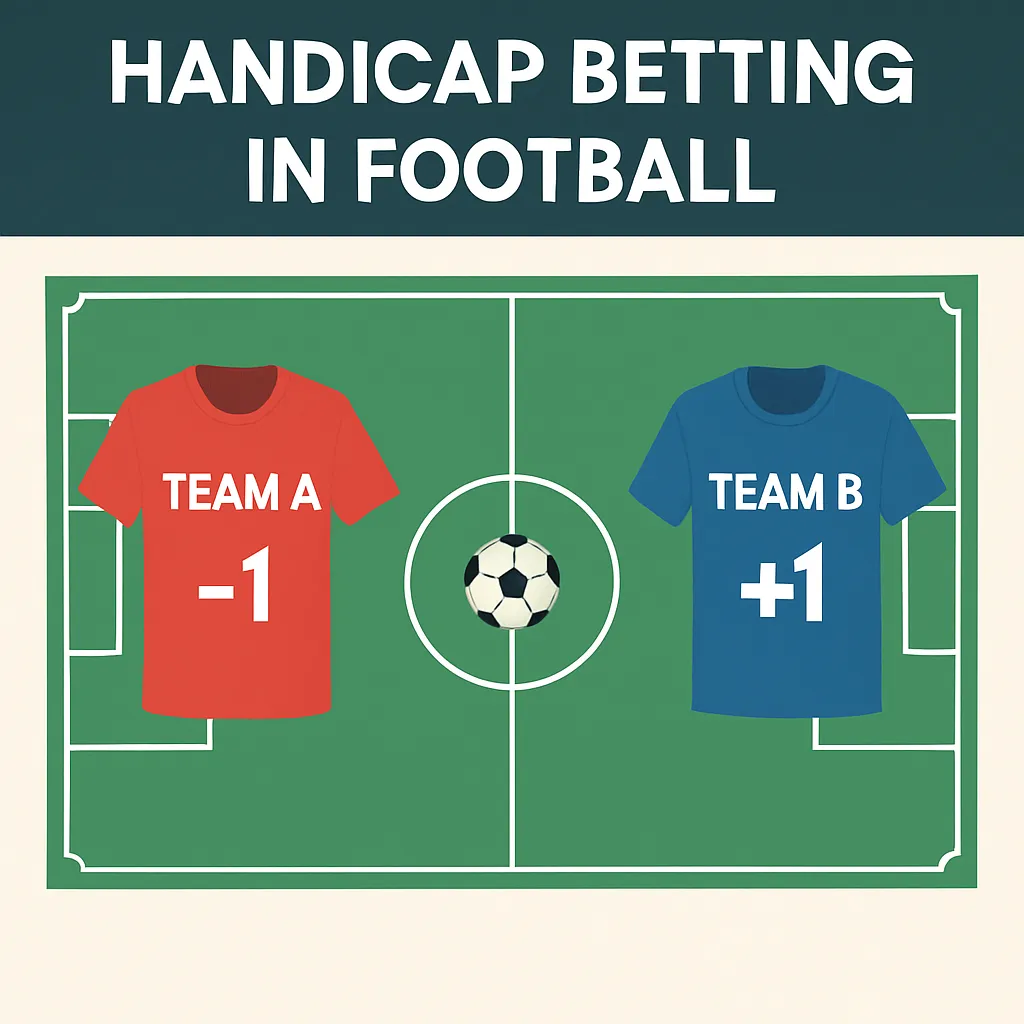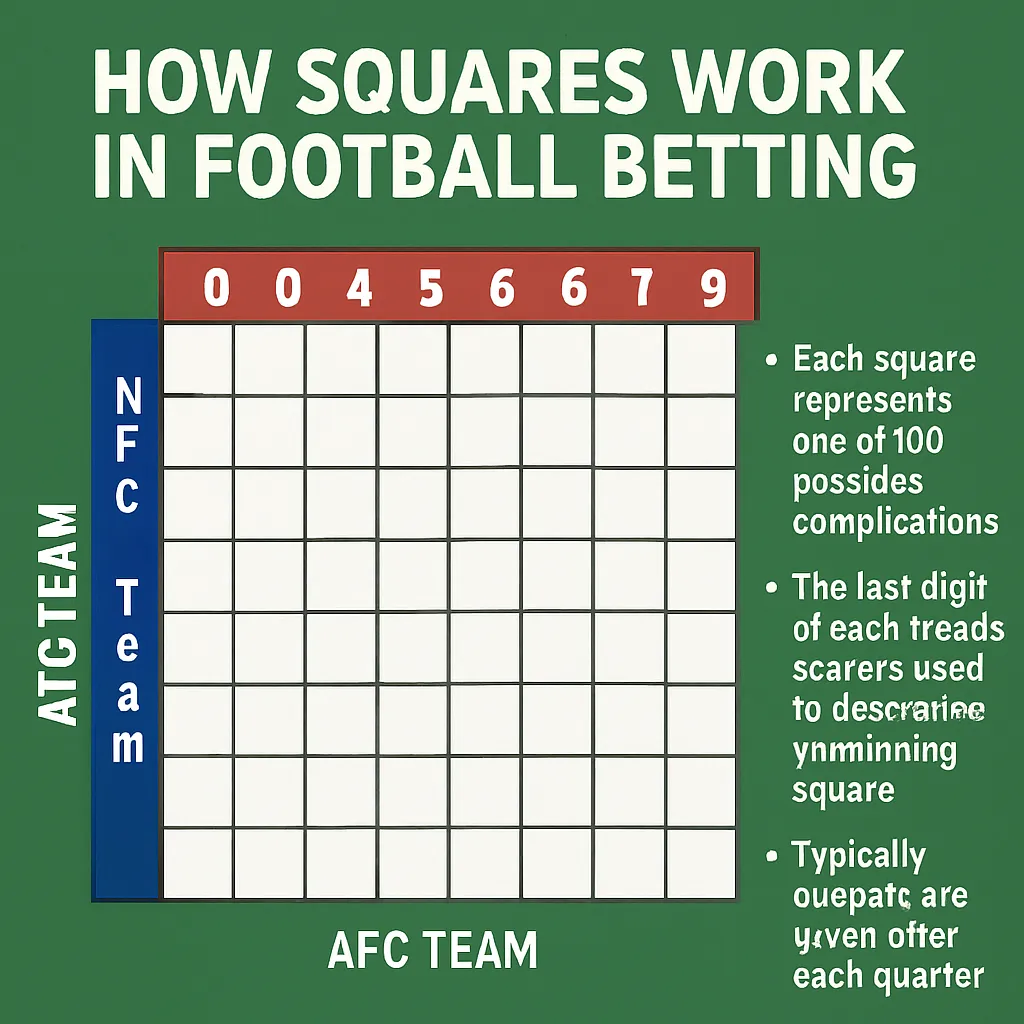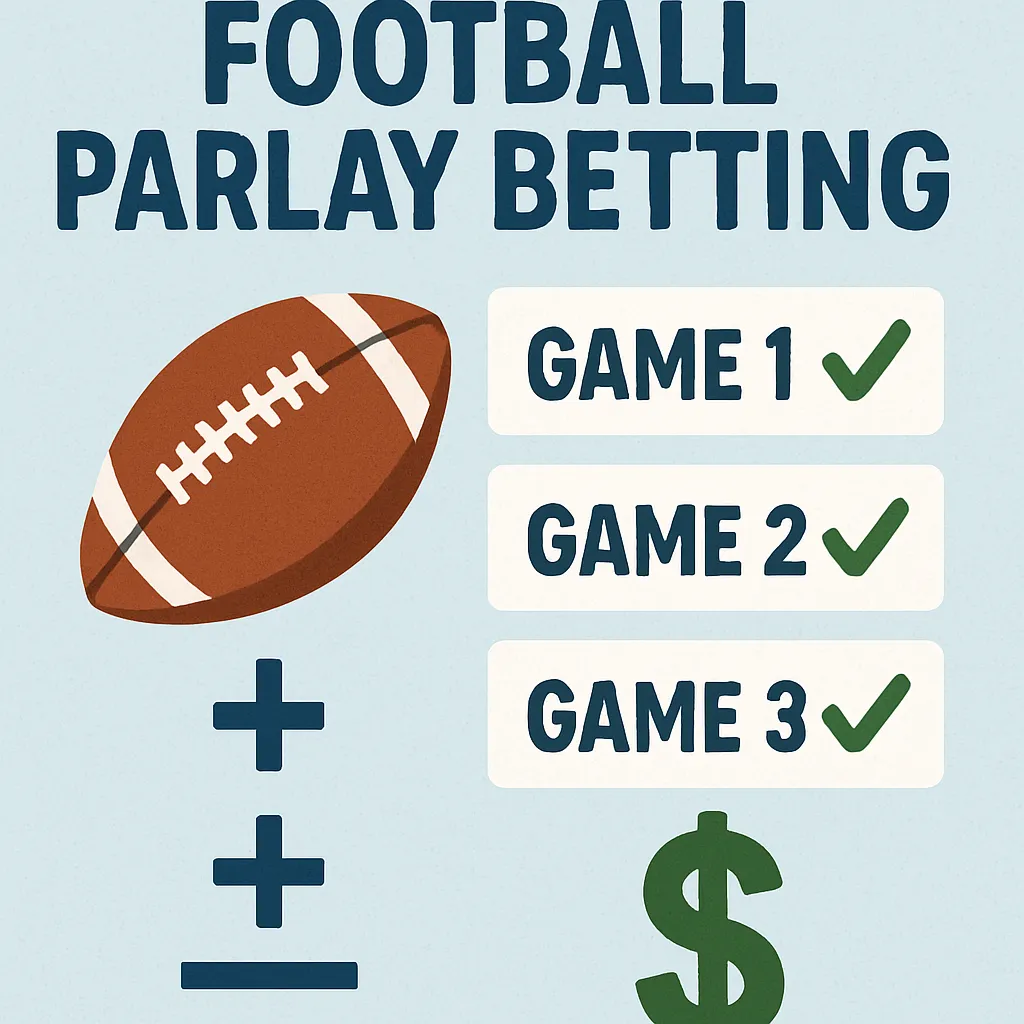Handicap betting has become one of the most popular ways to add excitement and strategy to football betting. At its core, handicap betting levels the playing field between two teams of unequal strength by giving a virtual advantage or disadvantage—or “handicap”—to one side. This encourages more balanced odds and can offer better value when a strong favorite faces a weaker opponent. In this article, we’ll explore what handicap betting is, the different types available in football, how to place these bets, and the advantages and risks involved. Whether you’re new to football betting or looking to refine your wagering strategies, understanding handicap betting can enhance your overall betting experience. Let’s dive into the fundamentals and complexities of this engaging bet type.
What is Handicap Betting?
Definition and Basics
Handicap betting is a form of sports betting where bookmakers assign a virtual advantage to the underdog or a virtual deficit to the favorite in order to balance the chances between the two sides. This virtual adjustment is expressed in goals or fractions of goals for football matches. By doing so, bookmakers make wagers more competitive and appealing by offering more balanced odds on both teams. For example, if Team A is significantly stronger than Team B, Team A may start with a –1.5 goal handicap, meaning they must win by two or more goals for a bet on them to succeed. Conversely, Team B would receive a +1.5 goal advantage, allowing bettors to back the underdog with a cushion. The handicap value can be a whole number, half-goal, quarter-goal, or other fractional increments, each with its own payout implications. This system encourages punters to consider not only who wins, but by how many goals, adding depth to traditional match betting.
Handicap betting’s main appeal lies in its ability to level the betting field. When there’s a mismatch between teams, traditional moneyline odds on the favorite can be very short, offering low returns. Handicap betting remedies this by effectively giving the weaker team a head start, making the odds on the favorite more attractive to back. Moreover, handicap bets can be placed on various outcomes: full-time results, half-time results, and even over/under goal markets with handicap adjustments. Each carries its own nuances and strategies. Bettors often study team form, goal-scoring trends, and defensive strengths to choose the precise handicap line that offers the best value. Ultimately, understanding the definition and basics of handicap betting is the foundation for more advanced tactics and profitable wagering in football.
How Handicap Betting Works in Football
In a typical handicap bet, bookmakers will present a range of handicap lines from which bettors choose based on their predictions. These lines reflect the expected goal difference between the two teams. For instance, if Manchester City faces Burnley and City is overwhelming favorite, a bookmaker might list City at –2.0, –1.5, or even –3.0 handicap lines. If you back City at –2.0, they must win by three or more goals to return a full payout; a two-goal victory results in a push and a refund, while anything less means the bet loses. On the other side, backing Burnley at +2.0 would make the bet a winner if they lose by only one goal or win/draw outright. Such dynamics introduce more strategic depth to football betting beyond simply predicting a winner.
Handicap betting in football also includes half-time handicap markets, where the adjustment applies only to the score at half-time. Some bookmakers even offer multi-handicap lines for different periods of the match, such as first 15 or 30 minutes. Furthermore, handicaps can be applied to goal markets—for example, over/under 2.5 goals with a handicap twist, effectively creating an “Asian over/under” market. Understanding how these line movements and adjustments work allows bettors to spot value, hedge positions, or structure accas (accumulators) that combine multiple handicap picks. Key to success is monitoring the handicap market movements; significant shifts can indicate insider betting or team news impacting the line. Overall, the mechanics of handicap betting reward disciplined analysis and timely wagers.
Types of Handicap Bets in Football
Handicap betting encompasses several distinct bet types tailored to different preferences and risk appetites. The two main categories are Asian handicap and European handicap, each with its own rules for settlement. Additionally, split handicaps combine elements of both and offer nuanced winning/refund scenarios. Bettors should understand how each type functions, as the same numeric line can produce different outcomes depending on the handicap system applied. Below, we compare the Asian and European variants and introduce split handicaps as a hybrid option.
| Feature | Asian Handicap | European Handicap |
|---|---|---|
| Handicap Increments | 0.0, 0.25, 0.5, 0.75, 1.0, etc. | Whole numbers only (e.g., 0, 1, 2…) |
| Settlement | Win, lose, or push (refund) on selected leg(s) | Win, lose, or draw bets without refunds |
| Complexity | More complex; may split stakes across two lines | Straightforward; single-line adjustment |
| Draw Possibility | No draw; pushes refunded | Draw possible; betting on draw is separate market |
| Ideal For | Bettors seeking lower variance and partial refunds | Bettors wanting simpler odds without partial stakes |
The table above outlines the primary distinctions between Asian and European handicap formats. Knowing these differences helps bettors choose the system that aligns with their risk tolerance and strategic preferences. Asian handicaps can split a stake across two lines, such as –0.75 being a combination of –0.5 and –1.0, offering half-wins and half-refunds in specific scenarios. European handicaps, on the other hand, are simpler but include the possibility of a draw outcome, which can mean a losing bet if the adjusted score ends level. Choosing between these formats often comes down to whether you prefer the safety net of a push or the straightforward simplicity of the European model.
Asian Handicap Explained
Asian handicap betting eliminates the possibility of a draw by adjusting the match score with a handicap, resulting in only two possible outcomes: win or lose. Fractional handicaps (e.g., 0.25, 0.75) split your stake into two separate bets on adjacent whole- or half-goal lines. For instance, at –0.25, half your stake goes on –0.0 (draw no bet) and half on –0.5 (favorite must win). If the favorite wins by one or more goals, both parts win; if it’s a draw, the –0.5 leg loses but the –0.0 leg refunds. Asian handicap markets are extremely popular in Asia and globally among sharp bettors due to the reduced variance and partial refunds they offer.
When selecting an Asian handicap, it’s crucial to understand how bookmakers derive the lines based on team strength, recent form, injuries, and head-to-head statistics. Odds movements in the Asian handicap market can reflect significant betting interest and insider knowledge, so monitoring line shifts is a key part of advanced handicapping strategy. Because of the partial-win and partial-refund features, Asian handicaps often produce better overall payout percentages for smart bettors than straight moneyline bets on heavy favorites. Many professional bettors focus on Asian lines for these reasons, pairing them with live betting to catch line movements in real time.
Another unique Asian handicap feature is the “quarter-goal” line (e.g., ±0.25 or ±0.75), which effectively splits a stake to optimize outcomes. This allows a fine-tuned risk management approach, where bettors can reduce losses on close matches and still capitalize on more decisive outcomes. Asian handicaps also adapt seamlessly to in-play betting, offering a variety of line adjustments as the match evolves. Ultimately, these markets reward bettors with patience, discipline, and a willingness to track line movements, making them a staple of professional football betting arsenals.
European Handicap Overview
European handicap betting, sometimes called “three-way handicap,” involves applying a whole-goal handicap to the favorite or underdog, with three possible outcomes: home win, draw, or away win on the adjusted scoreline. Unlike Asian handicap, there are no half-goal or quarter-goal lines. For example, if Barcelona starts at –1.0, they must win by two or more goals to win the bet; a one-goal victory results in the match being a draw (and thus a losing bet for either side), and anything less means a loss. Bettors can also back the draw outcome on the handicap line, which is not an option in Asian markets.
The appeal of European handicaps lies in their simplicity: a single stake on a straightforward line with clear win/lose/draw outcomes. However, the inclusion of a draw result as a losing bet adds variance compared to Asian handicaps where draws are typically refunded. European handicaps are commonly offered on major European and American sportsbooks, and some bettors prefer them for simpler bankroll management. They work best when there’s a clear expected goal difference but bettors still want a crisp, unambiguous outcome without partial refunds.
Strategy for European handicaps involves evaluating the likelihood of each adjusted outcome, factoring in team form, goal expectancy models, and game context. Because the draw outcome is possible, European handicaps can offer higher odds than moneyline bets on favorites in mismatched games. Bettors willing to accept the additional variance may find value, especially if they believe a favorite will win comfortably. In many cases, combining European handicaps with other markets, such as over/under or both teams to score, can create attractive multi-leg wagers tailored to specific match predictions.
Split Handicaps
Split handicaps are essentially a hybrid between Asian and European systems, splitting your stake across two separate whole-goal handicap lines. For instance, a –1.5/–2.0 split handicap on Liverpool vs. Newcastle means half your stake is on –1.5 and half on –2.0. Liverpool must win by three or more goals for a full payout; a two-goal win sees the –1.5 leg win and the –2.0 leg push (refund); a one-goal win or draw loses both legs. This approach offers a balance between higher odds and partial safety nets, tailoring risk exposure.
Bettors use split handicaps when they have confidence in a strong favorite but want some insurance against narrower margins. By splitting the stake, you effectively layer two predictions, capturing varied possible outcomes. Leading bookmakers often offer split handicaps in both Asian and European formats, combining strategies from both markets. For example, a quarter-goal Asian split can be combined with a whole-goal European line to create bespoke bets reflecting nuanced forecasts.
Before placing split handicap bets, it’s vital to understand how each half of the stake will be evaluated. Check the settlement rules carefully—some bookmakers treat split Asian lines differently from split European lines. As always, study team news, head-to-head trends, and scoring patterns to select splits that maximize potential returns while minimizing downside. Split handicaps are ideal for experienced bettors seeking customized exposure to match outcomes.
How to Place a Handicap Bet
Step-by-Step Guide
Placing a handicap bet in football betting is straightforward once you understand the process. First, create or log in to your account with a reputable bookmaker that offers handicap markets on football matches. Ensure your account is funded and that you’ve verified any age or identity requirements. Next, navigate to the football section and select the match you want to wager on. Look for the “Handicap” or “Asian Handicap” tab, depending on which format you prefer. Once you’ve chosen your handicap format, review the available lines—these will be displayed as positive or negative numbers indicating goal adjustments.
After selecting the handicap line that corresponds to your prediction, enter the stake amount you wish to wager. Double-check the implied odds for that line and confirm that the potential payout meets your expectations. Always verify how the bet will be settled—whether as a single line, split stake, or quarter-goal adjustment. Finally, click “Place Bet” or “Confirm” and make sure the bet appears in your open bets or bet slip. Keep track of the match in-play if you’re looking to hedge or cash-out mid-game, as many bookmakers offer live handicap adjustments and cash-out options for dynamic risk management.
- Log in to your preferred bookmaker and fund your account.
- Select the football match and open the handicap betting section.
- Choose between Asian, European, or split handicap formats.
- Select the handicap line that aligns with your prediction.
- Enter your stake and review the potential payout.
- Confirm and place your bet, then monitor the match or use cash-out options as needed.
Example Scenarios
To illustrate how handicap betting works, consider a Premier League match between Chelsea and Brighton. Suppose Chelsea is favored to win and is listed at –1.5 handicap odds of 1.90. If you back Chelsea at –1.5 with a €100 stake, they must win by two or more goals for you to win €90 profit (€190 payout). If they win by only one goal, the bet loses. Alternatively, you could back Brighton at +1.5 for odds of 2.00; they can draw or lose by one goal and still return €200 on a €100 stake.
For an Asian quarter-goal example, imagine Liverpool vs. Aston Villa with a –0.75 line on Liverpool. A €100 stake splits into €50 on –0.5 and €50 on –1.0. If Liverpool wins by two goals, both legs win and you profit on the full €100. A one-goal victory yields a win on the –0.5 leg but a push on the –1.0 leg, returning €50 stake and €45 profit. If the match draws or Aston Villa wins, you lose both legs. These example scenarios highlight the strategic choices available in handicap betting, from simple lines to split stakes and partial refunds.
Advantages and Risks of Handicap Betting
Why Choose Handicap Betting?
Handicap betting offers several compelling advantages over traditional moneyline bets. Firstly, it levels the playing field between teams of unequal strength, providing better odds on heavy favorites and more engaging betting markets. Secondly, formats like Asian handicap reduce variance by offering partial refunds on pushes, making bankroll management more predictable. Thirdly, handicap lines can be very liquid, especially in major leagues, meaning tight odds and efficient price discovery. Finally, bettors can exploit line movements—watching for shifts due to team news, injuries, or market sentiment—to secure value before lines adjust.
By understanding how bookmakers derive handicap lines based on expected goal margins, sharp bettors can target mispriced lines where the public has over- or under-reacted to news. Handicap betting also pairs well with statistical models that forecast goal differences, allowing data-driven strategies. Moreover, many sportsbooks offer promotions and enhanced odds specifically for handicap markets, giving punters extra incentives. Overall, handicap betting enhances the depth and excitement of football betting by requiring bettors to predict both result and margin.
Potential Pitfalls
Despite its appeal, handicap betting carries inherent risks that bettors must understand. Heavy reliance on favorites can still lead to significant losses if matches turn unexpectedly defensive or low-scoring. Quarter-goal lines add complexity to settlement rules, and miscalculating a split stake scenario can result in confusion or unexpected outcomes. Additionally, live handicap markets can move quickly, and chasing lines mid-game often leads to poor value and emotional betting. Bettors should be wary of overexposure on heavily handicapped favorites without proper bankroll allocation.
Another pitfall is failing to account for situational factors such as weather conditions, referee tendencies, or tactical approaches—each of which can drastically alter expected goal margins. Asian handicaps minimize the draw risk, but lower variance also means lower odds, which may not suit high-variance punters seeking big returns. Finally, poor line selection without statistical backing or overconfidence in team news can quickly erode profits. Successful handicap bettors combine disciplined staking plans, robust statistical analysis, and strict emotional control.
FAQ on Handicap Betting in Football
Common Questions Answered
-
Is handicap betting legal?
Handicap betting is legal in regions and jurisdictions where sports betting is regulated and licensed. Always check local laws before placing wagers.
-
What’s the difference between +0.5 and +1.0 Asian handicaps?
A +0.5 handicap means the underdog needs to avoid defeat (draw or win) to win your bet. A +1.0 handicap splits your stake across +0.5 and +1.5 lines, offering partial wins and partial pushes.
-
Can handicap bets be cashed out early?
Many bookmakers offer cash-out options on handicap bets, allowing you to secure a profit or limit losses before the match ends.
-
Which is better: Asian or European handicap?
It depends on your risk preference. Asian handicaps offer partial refunds and lower variance, while European handicaps are simpler but include the possibility of a draw loss.
-
How do bookmakers set handicap lines?
Lines are set based on statistical goal models, team form, player availability, historical head-to-head data, and market betting patterns.
-
Are handicap bets suitable for beginners?
Beginners can start with basic whole-goal European handicaps before moving to more complex Asian or split lines as their understanding deepens.



